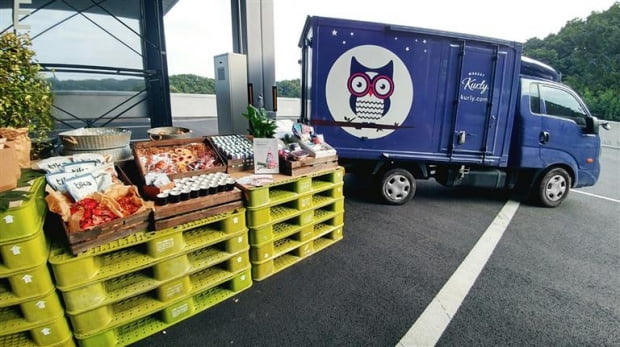
After Coupang successfully listed on the U.S. stock market, its rival Market Kurly also announced plans to list on the stock market within this year. It is analyzed that this is because the need for additional funding in order to survive as the market competition intensified, such as Coupang secured live ammunition by listing in the US and Naver and SSG.com established an allied front.
According to Curley, a marketplace manager on the 12th, CEO Seul-ah Kim recently shared plans to promote listing within this year to employees of the team leader level or higher. An official from Market Curley explained, “It is true that we are promoting listing within this year, but we are not limited to the US stock market.
The Wall Street Journal of the United States (WSJ) said, “CEO Kim said in an interview that he is discussing plans for listing within this year with financers. Like Coupang, Marketcully is considering listing on the US New York Stock Exchange this year.” ) Reported. WSJ introduced Market Curly as a company worth about 880 million dollars (about 1 trillion won).
Market Curly, which opened in 2015, is a pioneer in domestic’dawn delivery’ service. With word of mouth among young housewives with early morning delivery called’Satbyul Delivery’ and exclusive’premium’ products that are not sold elsewhere, Market Kurly is rapidly expanding business and becoming one of the major domestic distributors in the fresh food sector. Got it. Annual sales from 2.9 billion won in 2015 soared to 428.9 billion won in 2019. The deficit also increased every year, recording a net loss of 97.5 billion won in 2019. The number of members exceeded 7 million as of this month, and a total of four distribution centers are in operation, including the Gimpo distribution center, which opened last month.
In an interview with WSJ, CEO Kim said, “I’m trying to taste all the products selected and provided by Market Curly,” and “I plan to continue focusing on the food sector rather than expanding the business started as a fresh food to other product areas.”

WSJ cited internal data from Market Curly and said that the reuse rate of Market Curly users is 60%, much higher than the industry average (29%). “The world’s fifth largest online shopping market in Korea is expected to grow 11% from last year to $116 billion this year,” he said, citing stable delivery through its own logistics system as the strength of the Korean online market.
The listing of Coupang seems to have had the greatest impact on Market Curly’s consideration of listing within this year. It is analyzed that the determination that it was appropriate for the time would have worked as the growth potential of the domestic e-commerce market was proved through the listing of Coupang.
It is also because Curley’s financial situation, which achieved close to 1 trillion won in sales last year, has improved enough to make it possible for an IPO. The deficit decreased to about 10% of sales to 100 billion won. However, analysts say that the New York stock market is more likely to go to the US because it is easier to meet the fiscal listing requirements than the domestic stock market. The listing requirements for NYSE are profitability, revenue, and cash flow.
With only 13% of the domestic e-commerce market share, Coupang recorded the highest performance among IPOs in the United States this year, demonstrating the growth potential of the domestic e-commerce market. Euromonitor predicted the size of the domestic e-commerce market this year to be $116 billion, an 11% increase from last year. Euromonitor evaluated the growth of the Korean e-commerce market as higher than that of the US, UK, China, and Japan.
In fact, after the novel coronavirus infection (Corona 19), online shopping has increased the share of the total market. In December last year, the proportion of online shopping out of total retail sales exceeded 30% for the first time. According to data released by the National Statistical Office on the 5th, the amount of online shopping transactions in December recorded 15,994.6 billion won, an increase of 26.1% from the same month last year. Online shopping accounted for 30.4% of the total transaction amount of 4,251 trillion won. Experts predict that the proportion of online shopping will increase from 50% to 60% within five years.
Reporter Bora Kim [email protected]
